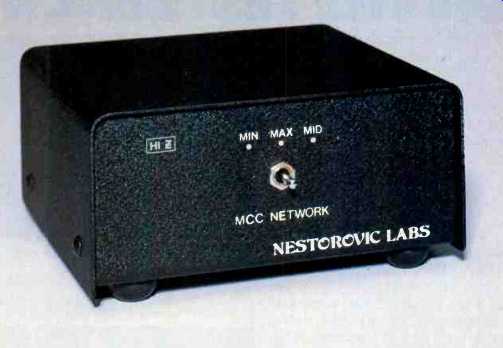
by Mile Nestorovic and Glenn White [Mile Nestorovic is President of Nestorovic
Laboratories, Kirkland, Wash. Glenn White is with Brüel & Kjaer in Seattle,
Wash.]
Moving-coil cartridges in general have an ultrasonic resonant frequency, usually in the range from 20 to 60 kHz. This resonance can result in a response peak amounting to 20 dB or more. Normally, this is not visible on the published response curves because they go only to 20 kHz, and the resonance may result in a rise of only 1 or 2 dB at this frequency.
It may be thought that a rise in the response above the audible frequency range is insignificant; however, the increased output of ultrasonic noise due to the peak places severe demands on the preamp. Intermodulation distortion between this ultrasonic noise and the signal produces difference tones, which are in the audible range. The sonic result is a distorted midrange, with reduced definition, a blurring of the stereo image, and a "metallic" quality to sounds between about 3 and 7 kHz. In addition to this, the response peak, although occurring at ultrasonic frequencies, causes large phase shifts in the audible range, and this also affects stereo imaging ability.
Manufacturers usually recommend a low-impedance load for moving-coil cartridges, sometimes as low as a few ohms. This reduces the amplitude of the peak but does not prevent the cartridge from ringing at the resonant frequency as a result of transient signals, nor does it correct the phase shift.
We have developed an alternative solution to the problem, consisting of a passive network to be connected between the cartridge and the preamplifier. This circuit creates an anti-resonant dip with the same "O" and amplitude as the cartridge peak. Its phase response is complementary to that of the cartridge, resulting in flat phase response for the combination. The network has three different overall characteristics, selected by a three-position A cartridge's ultrasonic resonance can make a difference in audible distortion, phase response, and stereo imaging. The MCC Network plugs between an MC cartridge and a pre-preamplifier to flatten phase and ultrasonic frequency response, switch, allowing optimization for almost all moving-coil cartridges. The network also presents the cartridge with an extremely low impedance at the resonant frequency to improve its damping without affecting its sensitivity within the audible range.
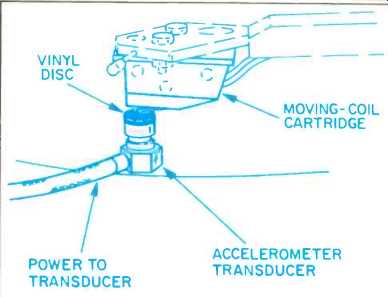
Fig. 1--The basic test setup, using an accelerometer transducer as a miniature,
ultrasonic shake table.
In order to measure frequency and phase response of cartridges, we borrowed a technique developed by Poul Ladegaard of Brüel & Kjaer Instruments in Denmark [1]. He uses a modified piezo-electric accelerometer as a miniature shaker by applying a high voltage a.c. signal to the piezo element. Because the shaker has constant displacement and phase for signals up to 70 kHz, it is possible to measure frequency and phase response of the cartridge in this frequency range. To ensure that the mechanical impedance presented to the stylus is typical of what it sees when playing a record, we introduced a small piece of vinyl between the shaker and the stylus. The vibration is thus transmitted through the vinyl to the stylus tip. The test setup is shown in Fig. 1.
Figure 2 shows the frequency and phase response of a very popular moving-coil cartridge, plotted with an expanded vertical scale to show the resonant peak. The peak at 80 kHz is the resonance of our miniature shaker. The phase shift of 90° at 40 kHz indicates the resonance of the cartridge, corresponding to the peak in the amplitude response. Figure 3 shows the same two curves of the same cartridge, but with the new network inserted between the cartridge and the preamp. (Frequencies below 5 kHz were of no interest in this work and so were not measured.) The frequency response above 20 kHz is now much flatter and the resonant peak nearly eliminated. Similarly, the system's phase response is also flattened.
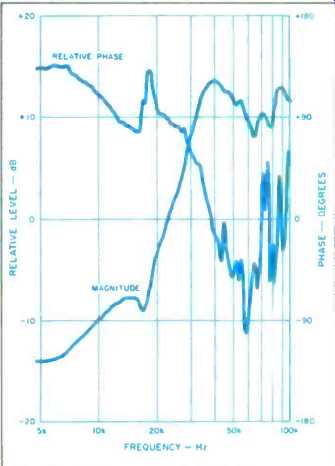
Fig. 2--Frequency and phase response of a popular moving-coil phono cartridge.
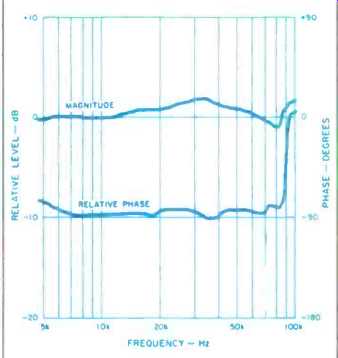
Fig. 3--The same cartridge as Fig. 2, with the Nestorovic network-in use,
switch set to "Max."
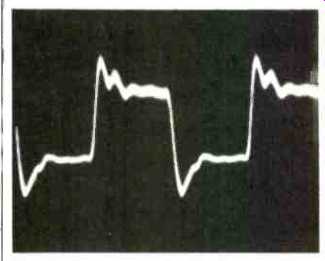
Fig. 4--Response to 4-kHz square wave of the cartridge used for Figs 2 and
3.
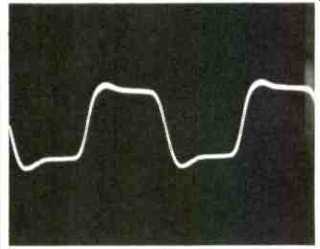
Fig. 5--Square-wave response of same cartridge with Nestorovic network in
use, switch at "Max" position.
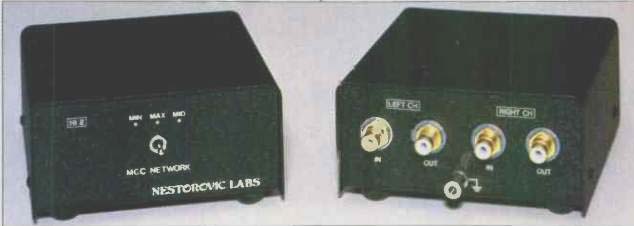
above: Front and back views of the MCC Network show its simplicity.
The passive network needs no power source. This version is for high impedance
MC cartridges; the version for low-impedance cartridges is externally identical
save for its front-panel designation.
The primary reason for using our miniature shaker instead of a test record is that phase response cannot be measured with a record-there is no phase reference to compare to. The shaker, however, does not simulate the geometry of the stylus sliding in the record groove. Therefore, we also made tests using the B & K QR-2010 test record, which contains a frequency sweep from 1 to 45 kHz recorded at constant velocity. This means it is to be played back without RIAA equalization. We played the record at 45 rpm, extending the frequency sweep to 60.75 kHz. When playing this record, all cartridges showed less extended frequency response, with a smaller peak, than our shaker revealed. We believe this is due to the tracing error of the finite stylus radius riding in the groove. The greatest similarity between shaker response and record response was with cartridges using the van den Hul stylus. This is understandable because this stylus design has very small side radii, about 3.5 microns, allowing it to more accurately trace the very small groove gyrations at high frequencies.
Using the new network, we had occasion to compare the same cartridge with both the van den Hul and a hyper elliptical stylus, and we found the van den Hul reproduced details in the upper midrange much more accurately.
A good test record is Cantate Domino (Proprius Records, older version, No. 7762). Choral passages were reproduced without blurriness, while elliptical styli caused significant blurring.
To evaluate the transient performance of the cartridge/network system, we have produced a special test record with a 4-kHz square wave recorded at constant velocity. This allows us to evaluate transient response above 20 kHz without using the standard RIAA playback curve. When using the test record, the cartridge and network were connected to a linear preamp, one flat to over 80 kHz, much like a high-quality microphone preamp. Figure 4 is the response of the cartridge without the network, and Fig. 5 is the response with it. It can be seen that the overshoot is reduced and the ringing is eliminated. Very high frequency noise is also reduced, lessening the chance for intermodulation products in the audible range. As mentioned before, our listening tests show subjective improvements in definition, especially in massed string sounds and choral passages. Ambience is improved in those records which contain recorded ambience. High-frequency noise is reduced also. We will make the network and the square-wave test record available commercially in the near future.
Reference
1. Ladegaard, Poul, "Phonograph Cartridge Evaluation Using a Minishaker and TDS," presented at the 74th AES Convention, New York, October 1983.
============
ON THE TESTBENCH
To evaluate the Nestorovic MCC Network, I inserted it between a van den Hul Type I phono cartridge and a pre-preamplifier. A special test record with a 4,870-Hz square-wave signal recorded at constant velocity (without RIAA pre-emphasis) was used, permitting evaluation of the frequency response above 20 kHz. Figure B1 shows the response of this cartridge to the 4,870-Hz square wave without the MCC Network, and Fig. B2 shows response with the network in use.
I have used the MCC Network with a variety of moving-coil cartridges, and always noticed the subjective enhancement of massed string sounds and choral passages (e.g., operatic choruses or choral works). When playing the superb Japanese pressing of Flutes de Pan et Orgue (Georges Zamfir, Philips 28PP-30) without the MCC network, the pan pipes accompanied by organ seemed somewhat blurred compared to hearing them played live.
However, when the network was introduced, the resultant sound was absolutely unbelievable-as if the pipes were actually being played in the listening room. It is doubtful that the sonic clarity of this record and cartridge could be further improved.
-B. V. Pisha
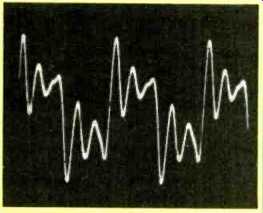
Fig. B1--Response of van den Hul Type I cartridge to 4,870-Hz square wave.
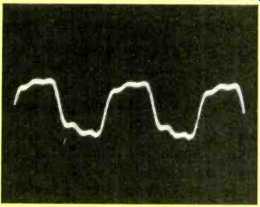
Fig. B2--Test as in Fig. B1 but using Nestorovic MCC Network.
============
(Adapted from: Audio magazine, Feb. 1985)
Also see:
Understanding Phono Cartridges (March 1979)
Birth of a Spec? PHONO CARTRIDGE NOISE (March 1977)
Equivalent Mass--Fact or Fiction? Science and theory of tonearms and pickup cartridges (March. 1978)
= = = =